The brain needs to keep busy or “exercised” to function effectively, thrive, and to be at the top of its game. Researchers have found that yoga helps the brain in two distinct ways. Yoga has the ability to alleviate stress and anxiety which can slow down the brain. Once the stress and anxiety have been released from the brain, yoga can then be used to keep the brain busy which in turn helps the brain stay sharp. Studies have found that specific yoga poses help to regulate the vagus nerve which is involved in regulating the body’s mood and stress levels. Once stress levels are lowered, research has found that those who practice yoga have an increased happiness level and they have a better overall quality of life.
How to Use Yoga to Improve Your Brain?
So as yoga rids the brain of stress and anxiety which slows the brain down, yoga opens the door to allowing the brain to exercise which keeps it sharp. Try these brain-boosting yoga poses to promote a healthy and happy brain.
 Padmasana (Lotus Pose)
Padmasana (Lotus Pose)
Find a flat surface and sit on the ground.
Your spine should be erect and your legs stretched out.
Gently bend your right knee and place it on your left thigh. You will most likely need to use your hands.
Soles point upwards and heels should be close to your stomach.
Do the same with the other leg.
After both legs are crossed, put your hands into a mudra of your choice and place them on your knees.
Stay straight and erect.
Breathe in deeply and exhale.
Hold for 2-3 minutes.
Repeat with the opposite leg on top.
 Vajrasana (Diamond Pose)
Vajrasana (Diamond Pose)
On the floor, kneel down and stretch your lower legs backward.
Keep them together.
Big toes should cross each other.
Lower your body gently so your butt rests on your heels and thighs on the calf muscles.
Place hand on knees and set gaze forward.
The Head has to be straight.
Pay attention to breathing. Listen to how you inhale and exhale.
Close your eyes and concentrate on your breathing.
Stay in Diamond Pose for 7 to 10 minutes.
 Halasana (Plow Pose)
Halasana (Plow Pose)
On the floor, lie flat on your back.
Arms placed next to the body with palms facing downwards.
Inhale, and lift your feet off ground using your stomach muscles.
Legs need to be at a 90-degree angle.
Using your hands to support your hips, lift them off the floor.
Bring feet to a 180-degree angle.
Toes are past your head (if possible).
Your back should be perpendicular to the ground.
Hold the position for 90 seconds.
Focus on breathing.
When you exhale for the last time, gently bring down your legs.
Do not jerk your legs.
 Padangusthasana (Big Toe Pose)
Padangusthasana (Big Toe Pose)
With feet 6 inches apart, stand upright.
Exhale as you bend forward from your hips.
Move head and torso in unison.
Grip your big toe using the index finger and middle finger of your hands. Slide them in the space between the second and big toe.
Inhale as try to lift your torso with straight elbows.
Lengthen your torso.
Lift sitting bones as you exhale.
Release your hamstrings and gently lift your lower belly to the back of the pelvis.
You will feel your lower back hollow.
Try to deepen the hollow more with every exhale.
Bend your elbows and lengthen both sides and the front of your torso as you start to finish the pose.
Lower yourself into a forward bend when you exhale.
Hold for 45-60 seconds before releasing the toes.
Move hands to rest on hips.
Inhale deeply as you bring your head and torso upright together.
 Bhramari Pranayama (Humming Bee Breathing)
Bhramari Pranayama (Humming Bee Breathing)
In a quiet spot, sit down on the floor and close your eyes.
Smile gently.
Feel your body with your mind and “listen” to the quietness around you.
Put index fingers onto your ears in the cartilage between the ear and cheek.
Inhale deeply.
When you exhale, press gently onto the cartilage.
Keep it pressed and make a “bee” humming sound.
Higher pitched is more effective.
Inhale again.
Repeat 5-7 times.



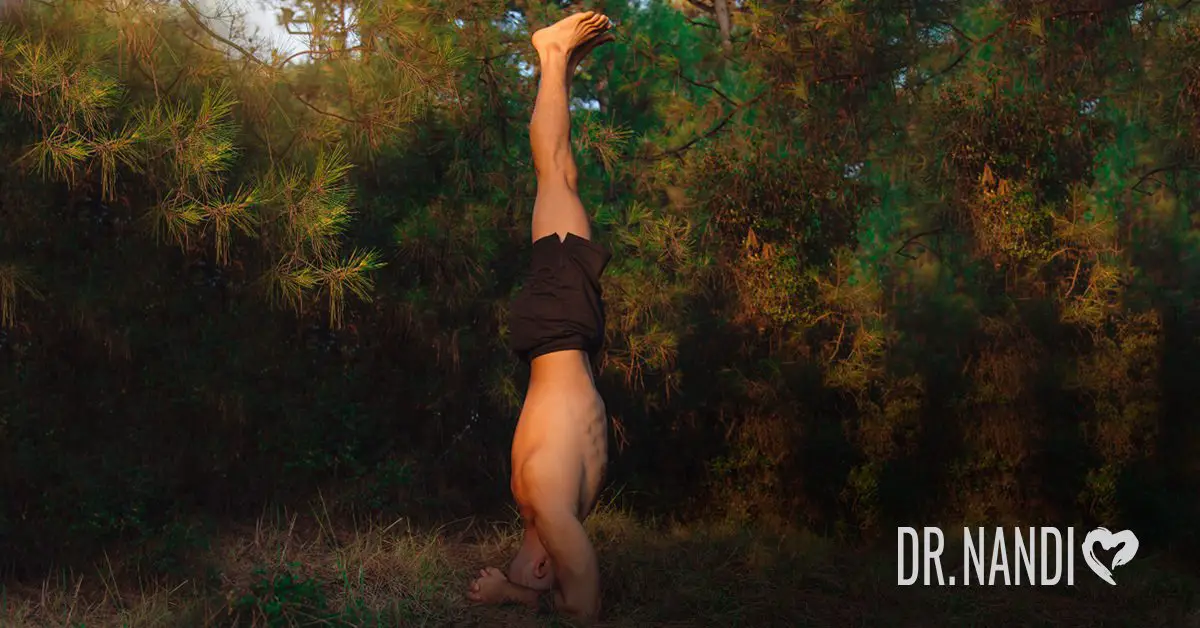
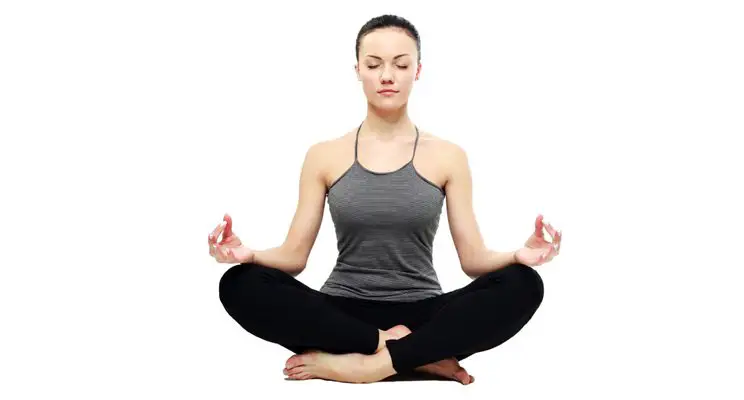 Padmasana (Lotus Pose)
Padmasana (Lotus Pose)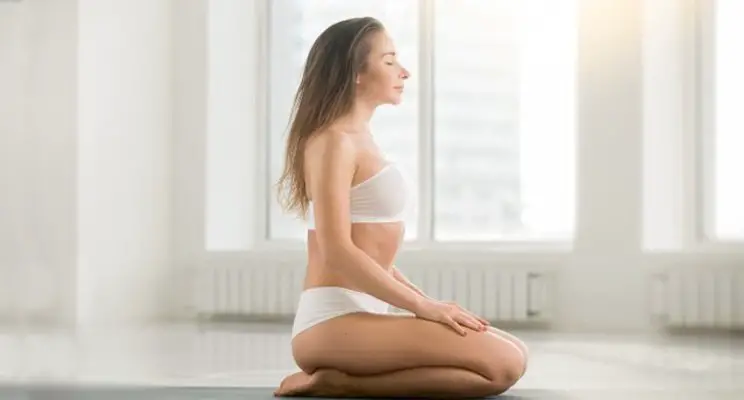 Vajrasana (Diamond Pose)
Vajrasana (Diamond Pose) Halasana (Plow Pose)
Halasana (Plow Pose)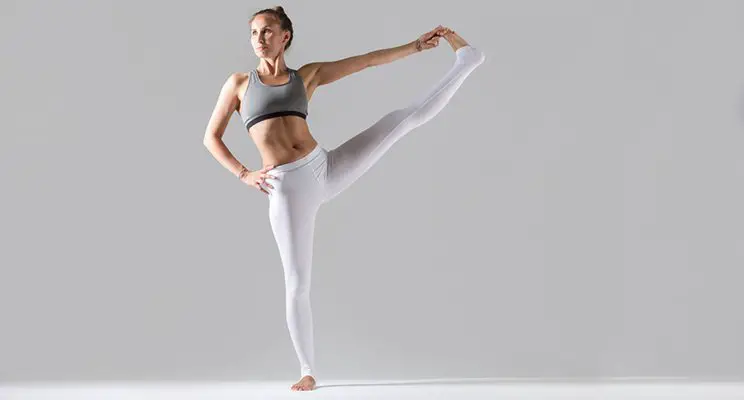 Padangusthasana (Big Toe Pose)
Padangusthasana (Big Toe Pose) Bhramari Pranayama (Humming Bee Breathing)
Bhramari Pranayama (Humming Bee Breathing)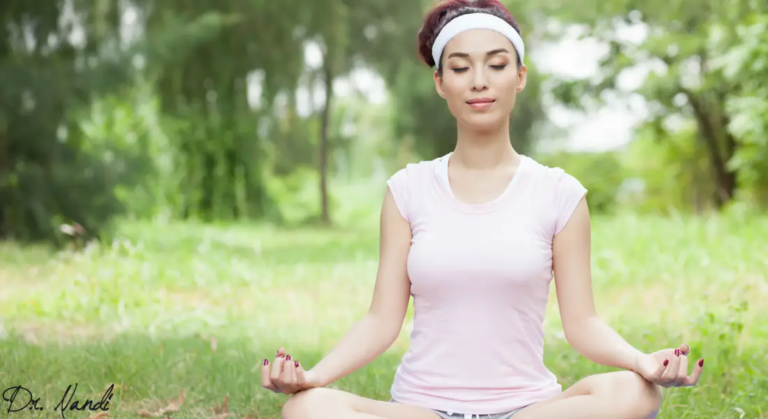





 Subscribe to Ask Dr. Nandi YouTube Channel
Subscribe to Ask Dr. Nandi YouTube Channel










